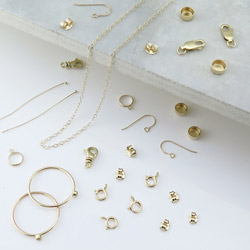Which Karat of Gold is Better?
 A karat (often abbreviated to the letter K) is a unit of weight used to measure the proportion of gold in an alloy, expressed as a number out of 24 parts. For example, 14 karat gold indicates 14/24 parts gold.
A karat (often abbreviated to the letter K) is a unit of weight used to measure the proportion of gold in an alloy, expressed as a number out of 24 parts. For example, 14 karat gold indicates 14/24 parts gold.
In its purest form gold is a soft metal so it is often mixed ("alloyed") with other metals, such as silver, copper and zinc to improve its strength. For example, 9 karat gold indicates 9/24 parts gold and 15/24 parts other metals.
The most common mixtures for gold are 9K, 14K, 18K and 24K.
Do not confuse the word karat with carat: a carat is a unit used to measure the weight of precious and semi-precious stones, and is equal to 0.2 grams.
So which is the best?
This is not an easy question to answer. It will depend on the colour of gold you want, your budget and how you will wear the jewellery.
24 Karat: this is pure gold and therefore very soft which means it can be scratched and bent easily. For this reason every day wear of 24K jewellery is not advised. In terms of price it is the most expensive karat of gold and can be seen as an investment. The colour is the brightest and brassiest of all the karats.
18 Karat: this is probably the most traditional karat of gold. The 25% alloy makes the gold much stronger than 24K and therefore more practical for every day use. The colour is a nice deep gold but a softer yellow than 24K.
14 Karat: this alloy offers good resistance to wear and tear and is far more affordable than either 18K or 24K. At 58% gold it is an excellent choice for every day gold jewellery.
9 Karat: at 37.5% gold the line between fine jewellery and costume jewellery becomes blurred. It is durable but has far less inherent value.
I hope this has been of interest - you can find our range of 14K gold findings on our website.